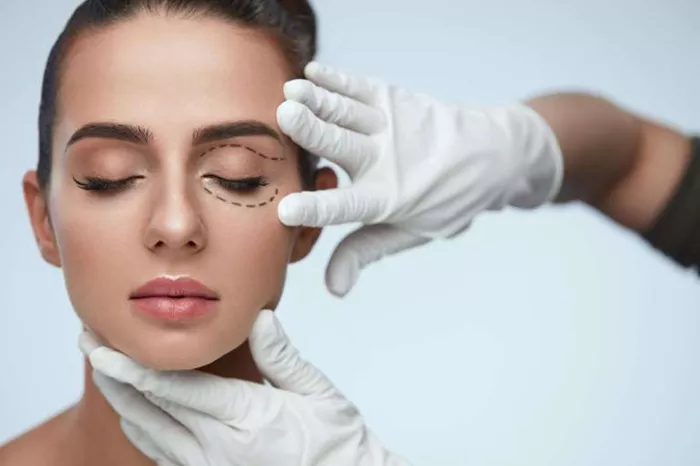Eyelid lifts, or blepharoplasty, are among the most common cosmetic procedures worldwide. They aim to enhance the appearance of the eyes by removing excess skin, fat, or muscle from the eyelids. This procedure is often sought for both functional and aesthetic reasons. But like any surgical procedure, it raises a critical question: Are eyelid lifts safe?
In this article, we’ll explore the safety, potential risks, and benefits of eyelid lifts in detail. This includes an analysis of the procedure, its suitability for different individuals, possible complications, and recovery expectations.
What Is an Eyelid Lift?
An eyelid lift, medically known as blepharoplasty, focuses on improving the appearance of the upper or lower eyelids. This surgery can address:
- Droopy eyelids caused by excess skin.
- Puffiness or bags under the eyes due to fat deposits.
- Fine wrinkles or sagging skin around the eyes.
Blepharoplasty can be performed on the upper lids, lower lids, or both, depending on the individual’s needs. It is classified into two main categories:
Functional Blepharoplasty: Performed to improve vision by removing obstructive excess skin or fat.
Cosmetic Blepharoplasty: Performed to enhance the appearance of the eyes.
How Is an Eyelid Lift Performed?
The procedure typically takes 1-3 hours and is conducted under local or general anesthesia. The steps involved include:
Preparation: Marking incision sites to minimize visible scars.
Incision: For upper eyelids, the incision is made along the natural crease. For lower eyelids, it may be just below the lash line or inside the eyelid.
Tissue Removal: Excess skin, fat, and sometimes muscle are removed or repositioned.
Closure: The incision is closed using fine sutures or skin adhesive.
Advanced techniques, like laser blepharoplasty or transconjunctival approaches, reduce recovery time and improve outcomes.
Who Is a Suitable Candidate?
Eyelid lifts are generally safe for healthy individuals, but not everyone is an ideal candidate. Factors influencing suitability include:
Age and Skin Elasticity: Individuals aged 35-70 with sagging skin or bags benefit the most.
General Health: Good overall health reduces surgical risks. Pre-existing conditions like dry eye, thyroid disorders, or cardiovascular issues must be evaluated.
Realistic Expectations: Understanding the limits of the surgery ensures satisfaction with the results.
A consultation with a qualified surgeon is essential to assess individual suitability.
What Are the Benefits of Eyelid Lifts?
Eyelid lifts offer multiple advantages, both functional and aesthetic:
Improved Vision: Removing excess skin eliminates visual obstruction.
Youthful Appearance: The procedure reduces puffiness and sagging, rejuvenating the face.
Boosted Confidence: Enhancing the eyes can improve self-esteem.
Long-Lasting Results: The results often last 5-10 years or longer with proper care.
These benefits make blepharoplasty a popular choice among individuals seeking a refreshed look.
Are Eyelid Lifts Safe?
The safety of eyelid lifts depends on several factors, including the surgeon’s expertise, the individual’s health, and adherence to post-surgery care. Generally, blepharoplasty is considered a safe procedure. However, like any surgery, it carries some risks.
What Are the Risks of Eyelid Lifts?
While complications are rare, potential risks include:
Common Side Effects:
- Swelling, bruising, or temporary discomfort.
- Sensitivity to light or tearing.
Surgical Complications:
- Infection at the incision site.
- Bleeding or hematoma formation.
- Poor wound healing or visible scarring.
Functional Issues:
- Dry eyes or difficulty closing the eyelids.
- Temporary blurred vision or double vision.
Rare Complications:
- Ectropion (outward turning of the eyelid).
- Vision loss (extremely rare but possible in severe cases).
Choosing an experienced surgeon and following post-operative instructions can significantly reduce these risks.
How to Minimize Risks?
Taking specific precautions ensures a safer experience:
Choose a Qualified Surgeon: Board-certified plastic or ophthalmic surgeons with extensive experience are essential.
Disclose Medical History: Provide a full medical history, including medications and allergies.
Follow Pre-Surgery Guidelines: Avoid blood-thinning medications and smoking before surgery.
Adhere to Post-Surgery Care: Use prescribed medications, avoid strenuous activities, and attend follow-up appointments.
What to Expect During Recovery?
Recovery is a critical phase that determines the success of the procedure. Key aspects of recovery include:
Initial Healing:
- Swelling and bruising peak within the first week.
- Use cold compresses to reduce swelling.
- Keep the head elevated while sleeping.
Suture Removal:
Stitches are typically removed within 5-7 days.
Activity Restrictions:
- Avoid heavy lifting and strenuous activities for at least two weeks.
- Protect the eyes from direct sunlight using sunglasses.
Full Recovery:
- Most individuals return to normal activities within 10-14 days.
- Final results are visible after 1-3 months as swelling subsides.
How to Ensure Optimal Results?
Achieving the best results requires a combination of proper surgical planning, skilled execution, and diligent aftercare. Consider the following:
- Maintain a healthy lifestyle to support healing.
- Use recommended skincare and sunscreen to protect the delicate eye area.
- Regularly consult your surgeon to address any concerns promptly.
Conclusion
Eyelid lifts are generally safe for individuals in good health and performed by qualified surgeons. While minor risks exist, they can be minimized through proper planning and care. The benefits, including improved appearance and functionality, often outweigh the potential drawbacks.
For those considering blepharoplasty, thorough research and consultation with a board-certified surgeon are crucial. By making informed decisions, you can ensure a positive experience and enjoy long-lasting, rejuvenating results.
Related topic:
How Do You Get Rid Of Eyelid Sores?
How to Treat Pink Swollen Eyelid?
How Is Droopy Eyelid Surgery Done?

